Nemanja Stefan Perovic
RIS-Assisted Receive Quadrature Space-Shift Keying: A New Paradigm and Performance Analysis
Nov 23, 2021
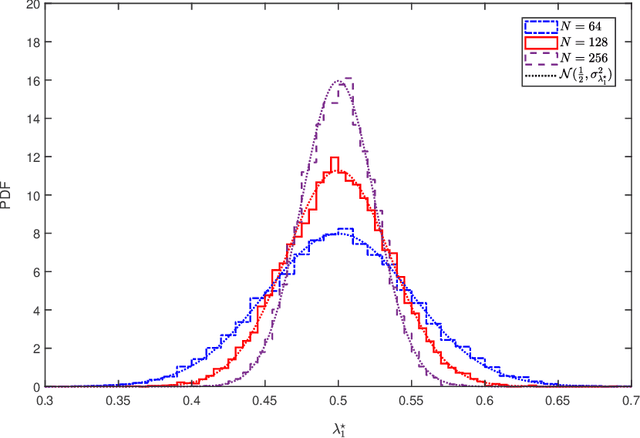
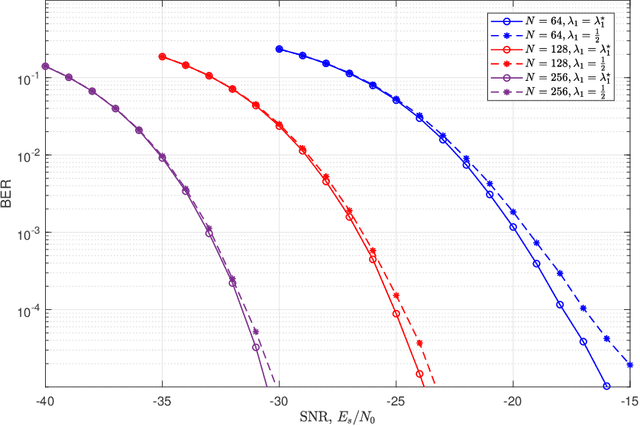
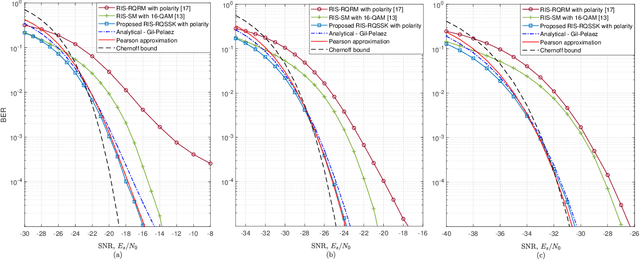
Abstract:Reconfigurable intelligent surfaces (RISs) represent a promising candidate for sixth-generation (6G) wireless networks, as the RIS technology provides a new solution to control the propagation channel in order to improve the efficiency of a wireless link through enhancing the received signal power. In this paper, we propose RIS-assisted receive quadrature space-shift keying (RIS-RQSSK), which enhances the spectral efficiency of an RIS-based index modulation (IM) system by using the real and imaginary dimensions independently for the purpose of IM. Therefore, the error rate performance of the system is improved as all RIS elements reflect the incident transmit signal toward both selected receive antennas. At the receiver, a low-complexity but effective greedy detector (GD) can be employed which determines the maximum energy per dimension at the receive antennas. A max-min optimization problem is defined to maximize the received signal-to-noise ratio (SNR) components at both selected receive antennas; an analytical solution is provided based on Lagrange duality. In particular, the multi-variable optimization problem is shown to reduce to the solution of a single-variable equation, which results in a very simple design procedure. In addition, we investigate the average bit error probability (ABEP) of the proposed RIS-RQSSK system and derive a closed-form approximate upper bound on the ABEP. We also provide extensive numerical simulations to validate our derivations. Numerical results show that the proposed RIS-RQSSK scheme substantially outperforms recent prominent benchmark schemes. This enhancement considerably increases with an increasing number of receive antennas.
Sparse Layered MIMO with Iterative Detection
May 21, 2021
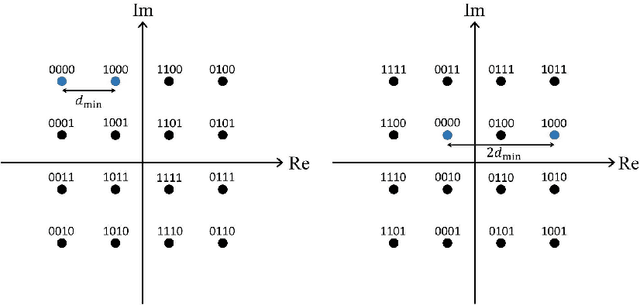
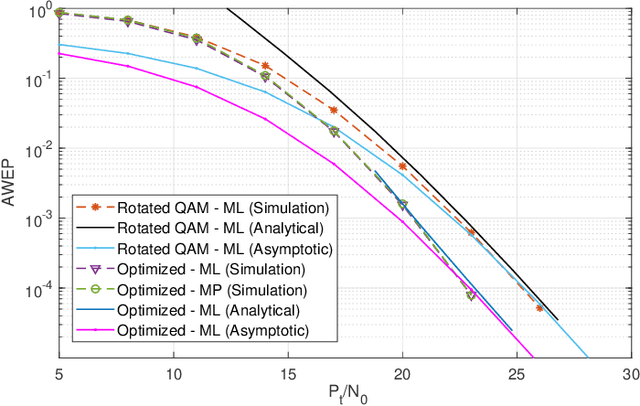
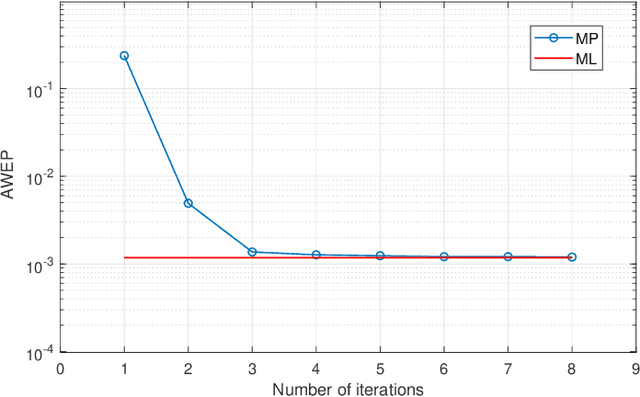
Abstract:In this paper, we propose a novel transmission scheme, called sparse layered MIMO (SL-MIMO), that combines non-orthogonal transmission and singular value decomposition (SVD) precoding. Nonorthogonality in SL-MIMO allows re-using of the eigen-channels which improves the spectral efficiency and error rate performance of the system through enhancing the coding gain and diversity gain. We also present a low-complexity message-passing (MP) detector for the proposed SL-MIMO system which performs quite close to maximum likelihood (ML). The joint moment generating function (MGF) of the ordered eigenvalues is calculated and used to derive a closed-form upper bound on the average word error probability (AWEP) of the SL-MIMO system, and this derived expression is then used to analyze the diversity gain of the system. We use our analytical results to design sub-optimal codebooks to minimize the error rate of the SL-MIMO system. Simulation results in 4x4 and 6x6 multiple-input multiple-output (MIMO) systems with 4-ary, 16-ary, and 64-ary constellations show that our proposed SL-MIMO scheme outperforms competing approaches such as X- and Y-codes in terms of system error rate performance. SL-MIMO has 5.6 dB advantage compared to X-codes and 4.7 dB advantage compared to Y-codes in 6x6 MIMO system with a 64-ary constellation.
 Add to Chrome
Add to Chrome Add to Firefox
Add to Firefox Add to Edge
Add to Edge